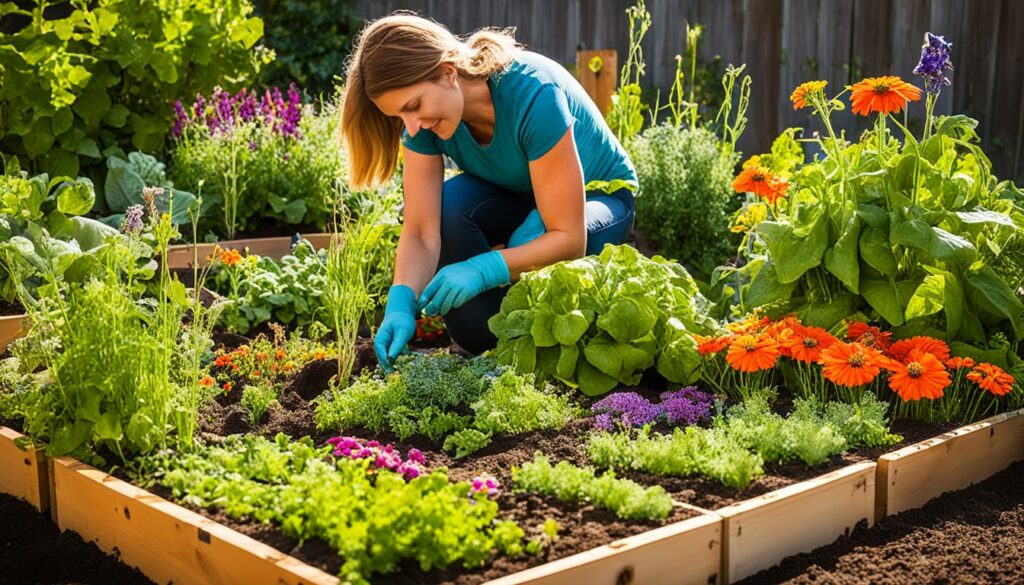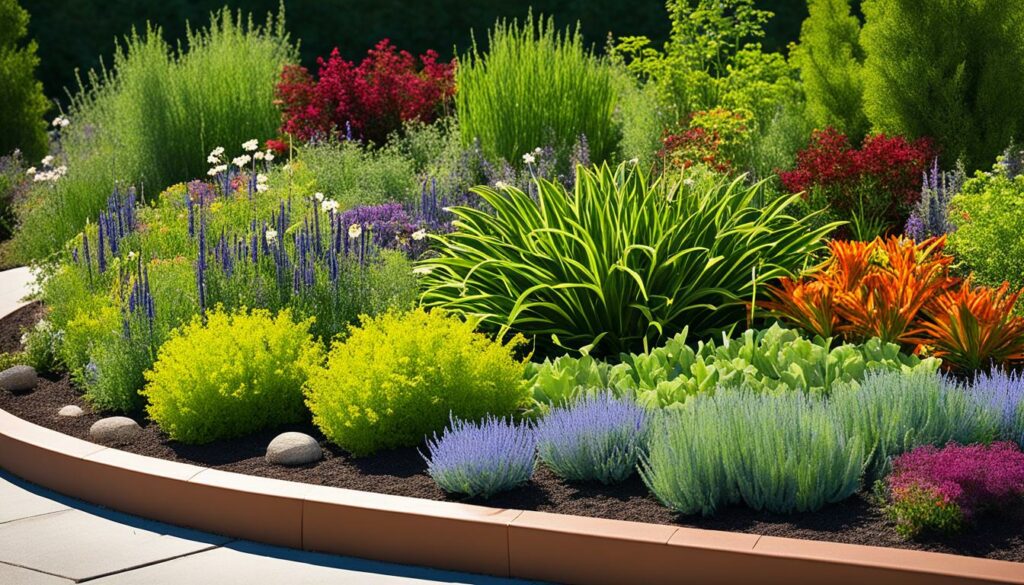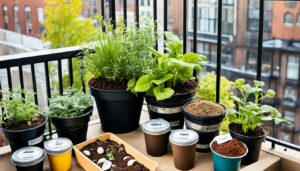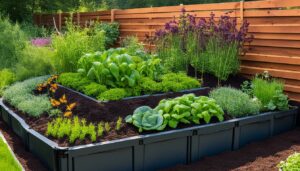Imagine stepping into a garden where the air is fragrant with basil, tomatoes reach towards the sun with robust vitality, and marigolds bloom fiercely, warding off pesky intruders. This is the harmonious tableau of companion planting, an ancient practice turning modern gardens into bastions of organic production. Whether you’re just dabbling your green thumbs in the soil or seeking to redefine your urban oasis, understanding how to start companion planting can transform your approach to gardening. This guide is crafted for novices eager to infuse their gardens with the bounties of nature’s wisdom—creating spaces where plants thrive together, as intended.
Companion planting for beginners is akin to setting the stage for a grand symphony. Each plant is an instrument, each pairing a concord of notes playing to the strengths and needs of the other. Yes, the melody of mutual benefit resounds through effective pairings like that of the classic tomato and basil. Through this companion planting guide, we invite you to cultivate not just plants, but relationships in your patch of earth—an ode to organic gardening with companion planting.
Key Takeaways
- Embrace the basics: Dive into companion planting with easy pairings like tomatoes and basil.
- Navigate the do’s and don’ts: Learn which plants are friends and which are foes.
- Organic thrives here: Reap the rewards of a garden rich with natural pest controls and partnerships.
- Think symbiotically: Cultivate plant relationships that bolster growth and flavor.
- Start simple: Your journey into companion planting doesn’t have to be complex.
- Eco-friendly gardening: Foster a sustainable, biodiverse haven in your own backyard.
Understanding Companion Planting
Embark on a journey through the lush world of companion planting, a technique steeped in tradition yet ever-evolving in the gardens of today. By intertwining the benefits of companion planting with tried-and-true companion planting techniques, gardeners can unlock the full potential of their green spaces. Let’s delve into this enriching practice to foster successful companion planting and witness the symbiotic splendor it brings to our ecosystems.
What is Companion Planting?
At the heart of organic gardening lies the elegant strategy of companion planting. This method places different plants in proximity, each selected for their ability to offer something of value to their neighbor—may it be shade, pest control, or soil enrichment. Effective companion planting results not just in a visually stimulating garden, but one that is bursting with life, as each plant performs at its peak while contributing to the vitality of its fellow flora.
The Historical Roots of Companion Planting
The concept of planting diverse crops in close quarters is by no means novel. For centuries, farmers and horticulturists have observed the virtues of certain plant relationships, passing down their knowledge of companion planting through each generation. This empirical wisdom has shaped today’s sophisticated gardening practices, allowing us to reap the benefits of companion planting with a precision that harmonizes with Mother Nature’s intricacies.
Basic Principles: Mutual Plant Benefits
The success of a companion planted garden boils down to understanding the mutual benefits that plants can provide to one another. Certain plants have an affinity for each other, thriving when sown side by side. Marigolds, with their vibrant blooms, serve as a natural deterrent to pests, while the humble nasturtium is an ally to squash, keeping harmful bugs at bay. Basil partners splendidly with tomatoes, enhancing flavor while bolstering plant health. Here, find a guide to creating harmonious plant friendships that foster robust growth:
| Beneficial Plant | Companion | Benefit |
|---|---|---|
| Marigolds | Tomatoes, Eggplants | Pest Deterrent |
| Nasturtiums | Squash, Cucumbers | Bug Repellent |
| Basil | Tomatoes, Peppers | Flavor Enhancement and Health |
| Borage | Strawberries, Tomatoes | Attracts Pollinators |
Each plant in the table above serves a dual purpose: to grow and to give, creating a garden that is not just a feast for the eyes but a symbiotic sanctuary for plants to flourish. By implementing these basic principles, your garden will become a testament to the rewards of nurturing plant camaraderie.
How to Start Companion Planting
Embarking on the journey of companion planting doesn’t have to be daunting for beginners. Companion planting tips generally emphasize starting small to manage expectations and avoid overwhelming first-time experiences. To start companion planting, a crucial first step is the identification of plant pairings that work harmoniously in your specific garden setup.
Consider simple yet effective combinations, such as planting dill alongside cabbages or integrating basil with your tomato plants. These pairings can serve as powerful companion planting for pest control measures while also enhancing overall plant vigor and yield. On the flip side, it’s vital to avoid plant combinations that may lead to competition for nutrients or even attract pests, as some partnerships in the garden are less than friendly.
- Research and select compatible plants for your vegetable garden.
- Start with a small number of plant combinations to slowly integrate the method into your gardening routine.
- Observe the interactions and growth patterns for signs of successful companion planting.
- Scale up gradually as you gain more confidence and experience.
Remember, successful companion planting is as much about understanding which plants to pair as it is about knowing which plants to keep apart. The art of companion planting is learned through experience and gradual experimentation.
To aid with visual understanding, the table below outlines some tried and tested companion planting pairings:
| Companion Plant | Benefits | Plants to Avoid |
|---|---|---|
| Basil | Repels flies and mosquitoes, improves the growth and flavor of tomatoes | Rue, common sage |
| Marigolds | Deters nematodes and pests with its strong scent | Beans |
| Dill | Attracts beneficial insects, improves growth and health of cabbage | Carrots, tomatoes |
| Nasturtiums | Acts as a trap crop for aphids, encourages growth of cucumbers and squash | None noted |

Implementing these companion planting tips can turn your garden into a flourishing ecosystem where every plant thrives. So, don’t hesitate to start companion planting in your garden today and reap the benefits of natural harmony among your plants.
Exploring the Benefits of Companion Planting
Companion planting, a cornerstone of sustainable agriculture, intertwines the strengths of various plants to forge a more resilient and vibrant garden ecosystem. By understanding and applying these symbiotic relationships, one can unlock numerous advantages, from bolstering garden yield to maintaining a delicate environmental equilibrium. Here we delve into the multifaceted rewards of this ancient farming practice, highlighting the natural solutions it provides for common horticultural challenges.
Natural Pest Control Strategies
Embracing companion planting benefits offers an environmentally sound approach to natural pest control. Certain plants, when positioned together, act as organic sentinels against invaders, reducing the dependence on synthetic pesticides. For instance, the charismatic marigold not only enlivens the garden with its fiery blooms but also wards off nematodes with its root secretions. Similarly, basil acts as a guardian for tomato plants, repelling thrips and whiteflies with its fragrant leaves. These plant allies provide a protective umbrella under which the entire garden thrives.

Boosting Soil Fertility and Plant Health
The practice of companion planting extends beyond pest management into the very soil in which our plants root. By boosting soil fertility, companion plants like legumes fix nitrogen, enriching the soil environment, and paving the way for the success of neighboring crops like corn and squash. This collaborative soil enhancement fosters a thriving plant community, promoting robust growth and higher nutritional values within the harvest.
Cost Savings and Sustainability
Sustainable approaches are more critical than ever, and here, sustainability in gardening shines, proving that eco-friendly methods can also be economical. Companion planting can lead to notable cost savings by decreasing the need for chemical fertilizers, pesticides, and water. The garden becomes a self-supporting unit, with plant pairings designed to support each other. For instance, the shade provided by taller plants can reduce water evaporation, conserving this precious resource.
| Companion Plant | Primary Benefit | Supportive Companion |
|---|---|---|
| Marigolds | Pest Deterrence | Tomatoes, Peppers |
| Basil | Flavor Enhancement | Tomatoes, Lettuce |
| Beans | Nitrogen Fixation | Corn, Squash |
| Nasturtiums | Trap Cropping | Brassicas, Cucumbers |
The power of companion planting manifests in vivid, tangible outcomes, as gardens teaming with diverse life become a testament to this balance. Whether it’s the improved flavor of your vegetables, a decline in pesky insects, or the simple joy of a well-nourished, thriving garden, the merging of tradition with ecologically mindful practices ensures a legacy of health and harmony for both the earth and its stewards.
Companion Planting Tips for the Home Gardener
Embarking on a journey into companion planting can be a transformative experience for the home gardener. One fundamental tenet to abide by is recognizing the best companion plants that yield mutual benefits. For pest control, marigolds stand out as champions, their vibrant blooms repelling a wide array of garden invaders. Nasturtiums share similar pest repellent qualities and can also provide an edible flourish to your garden. Incorporating these flower powerhouses into your garden not only brings color and life but serves as a crucial defense against unwanted pests.
On the culinary side of companion planting, aromatic herbs such as basil and cilantro do wonders. Basil, in particular, is known to enhance the taste of tomatoes, making this pairing a favorite among chefs and gardeners alike. Not only do these herbs amplify the flavor profiles of your vegetables, but they also bring along pest control benefits, adding another layer of utility to their already extensive résumé. By embracing these companion planting tips, you’re positioning your garden for success, with the delightful bonus of potentially elevating your next homemade dish.
Another consideration for effective companion planting is the strategic use of taller plants to provide much-needed shade during the hotter parts of the season. This natural umbrella can be crucial for more delicate plants that require protection from the harsh midday sun. When it comes to safeguarding beauty, plants like rue are noted for their ability to defend roses against certain insects, marrying utility with the splendor of flowering plants. As you integrate these methodologies into your garden, start simple and let your understanding deepen over time. Before you know it, your garden will become a testament to the principles of companion planting, boasting health, vitality, and a reduced need for chemical interventions. So, roll up your sleeves and let the earth’s wisdom guide you to a flourishing garden sanctuary.








